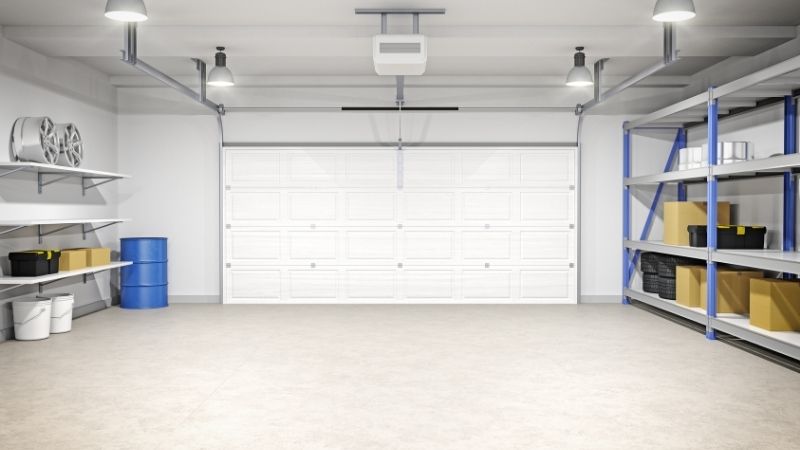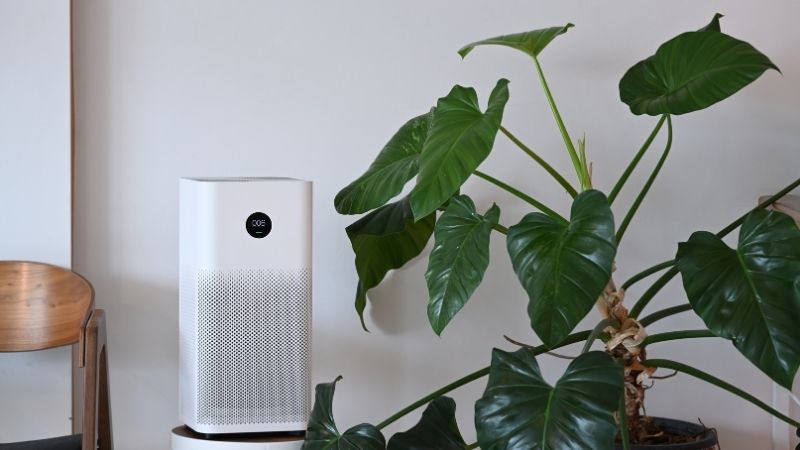Transforming your garage into a workshop can be a dream come true for DIY enthusiasts, hobbyists, and professionals alike. Whether you're crafting intricate pieces, fixing up furniture, or working on a project that requires precision, the right environment can make all the difference. And, when it comes to creating the perfect garage workshop, lighting and ventilation are two of the most important elements to focus on.
With the right setup, you'll not only improve your productivity, but you'll also ensure that your workshop remains a safe and comfortable space, even during those long hours spent perfecting your craft. Let's dive into the essential lighting and ventilation tips for creating a garage workshop that's both efficient and safe.
This post contains carefully selected links to products we love. If you choose to purchase through them, we may earn a small commission at no extra cost to you.
1. Lighting: Brightening Up Your Workshop for Precision and Safety
Good lighting is the foundation of any great workshop. You need to see what you're working on clearly, whether it's intricate woodwork or detailed electronics. However, the right lighting isn't just about brightness; it's about ensuring that your space is illuminated evenly and effectively.
Types of Lighting for Your Garage Workshop

Task Lighting
Task lighting is essential for focused work, such as cutting, soldering, or detailed painting. This is the type of light that illuminates your workspace directly, reducing shadows and improving accuracy.
Ambient Lighting
Ambient lighting serves as the general illumination of your entire space. It ensures that your workshop is bright enough to move around comfortably without straining your eyes. For larger garages, consider using overhead lighting or pendant lights to evenly distribute light across the room.
Accent Lighting
Accent lighting is great for highlighting specific areas or adding mood to your workspace. It’s not essential for functionality but can help to enhance the overall atmosphere. You can add LED strip lights around shelves or workbenches to create a visually appealing vibe.
Tips for Effective Garage Lighting:
- Use a Mix of Lighting Types: Combining task, ambient, and accent lighting will allow you to control how your space is illuminated and ensure all areas are covered.
- Opt for LED Lights: LED lights are energy-efficient, have a long lifespan, and provide bright, clear light without generating too much heat.
- Install Dimmable Lights: Dimmable lights give you control over the brightness, allowing you to adjust based on the task at hand.
- Position Lights Correctly: Ensure that lights are positioned to avoid casting shadows on your work area. For instance, overhead lights should be placed at a height where they won't create dark spots.
Choosing the Right Color Temperature
The color temperature of your lights can affect your productivity and comfort. Lights with a cool white (above 4000K) or daylight color temperature are ideal for a workshop as they provide a bright, clear light that mimics daylight, helping you stay alert and focused.
👉 We love these daylight LED bulbs that offer excellent clarity and color accuracy for detailed work.
2. Ventilation: Keeping Your Workshop Airy and Safe
Working in a garage workshop can be a lot of fun, but it can also involve exposure to fumes, dust, and heat. This is why proper ventilation is crucial for both safety and comfort. Without the right airflow, you could end up dealing with dangerous fumes from chemicals, woodworking dust, or excessive heat buildup.
Types of Ventilation Systems for Your Garage Workshop

Exhaust Fans
An exhaust fan is a must-have for any garage workshop. It helps to expel hot air, fumes, and dust from the workspace, ensuring that the air remains clean and breathable. When selecting an exhaust fan, make sure to choose one that is powerful enough to handle the size of your space.
Air Purifiers
An air purifier can work alongside your exhaust fan to remove harmful dust particles, fumes, and allergens. This is particularly important if you're working with materials like wood, metal, or paint that generate particles that could be harmful when inhaled.
Natural Ventilation
Whenever possible, make use of natural ventilation. Opening windows or garage doors can significantly improve airflow and reduce the buildup of heat and fumes. If your garage has multiple windows, position them to create a cross breeze that flows through the entire space.
Tips for Effective Garage Ventilation:
- Use a Combination of Ventilation Systems: Combine exhaust fans with air purifiers and natural ventilation to create an efficient airflow system that removes toxins and dust while maintaining a comfortable temperature.
- Check for Proper Airflow: Make sure that the exhaust fan is properly vented outside and that air can flow freely through the space. Avoid blocking vents or windows.
- Monitor Humidity: Excess humidity can lead to mold growth and rusting of tools. Consider installing a dehumidifier to maintain optimal humidity levels in your garage workshop.
3. Safety First: Protecting Yourself and Your Space
Safety should always be your top priority, especially when working in a space like a garage workshop. Inadequate lighting and ventilation can lead to accidents, health issues, and discomfort. Let’s discuss a few more tips to ensure your safety:
Lighting Safety Tips:
- Install Motion Sensors: To avoid fumbling around in the dark, install motion sensor lights that automatically turn on when you enter the garage. This ensures you're never left in the dark.
- Keep Lighting Fixtures Secure: Ensure that all lights, whether mounted on the ceiling or attached to the workbench, are securely fastened to avoid accidents.
Ventilation Safety Tips:
- Monitor Chemical Fumes: If you're using chemicals like paint, solvents, or cleaners, make sure your ventilation system is strong enough to filter out harmful fumes. Always work in a well-ventilated area to avoid inhaling toxic fumes.
- Wear a Dust Mask: When working with power tools or materials that create dust, always wear a dust mask. This will help protect your lungs from particles that can cause long-term health problems.
4. Comfort: Working Long Hours Without Breaking a Sweat
Long working hours in a garage workshop can lead to discomfort, fatigue, and overheating, especially in the summer months. Proper ventilation and lighting can help keep you comfortable, but there are a few other tricks to make those extended sessions more bearable.
Create a Cool, Comfortable Environment:
- Install a Ceiling Fan: A ceiling fan can help circulate air and maintain a comfortable temperature in your garage, especially if you're working in a non-air-conditioned space.
- Use Insulation: Adding insulation to your garage can help regulate the temperature, keeping it cooler in the summer and warmer in the winter.
Take Regular Breaks
Even the best lighting and ventilation can’t replace the importance of regular breaks. Step away from your work every 30 to 45 minutes to stretch your legs, hydrate, and give your eyes a rest from the bright lights.
Wrapping It Up
Creating a safe, efficient, and comfortable garage workshop is all about balancing lighting, ventilation, and comfort. With the right setup, you'll not only boost your productivity but also make your space safer and more enjoyable to work in. Remember to mix different types of lighting, make use of natural ventilation when possible, and always prioritize your health and safety.
For more tips and tools to enhance your workshop, follow Decormate on Pinterest and explore our latest blogs for more ideas!